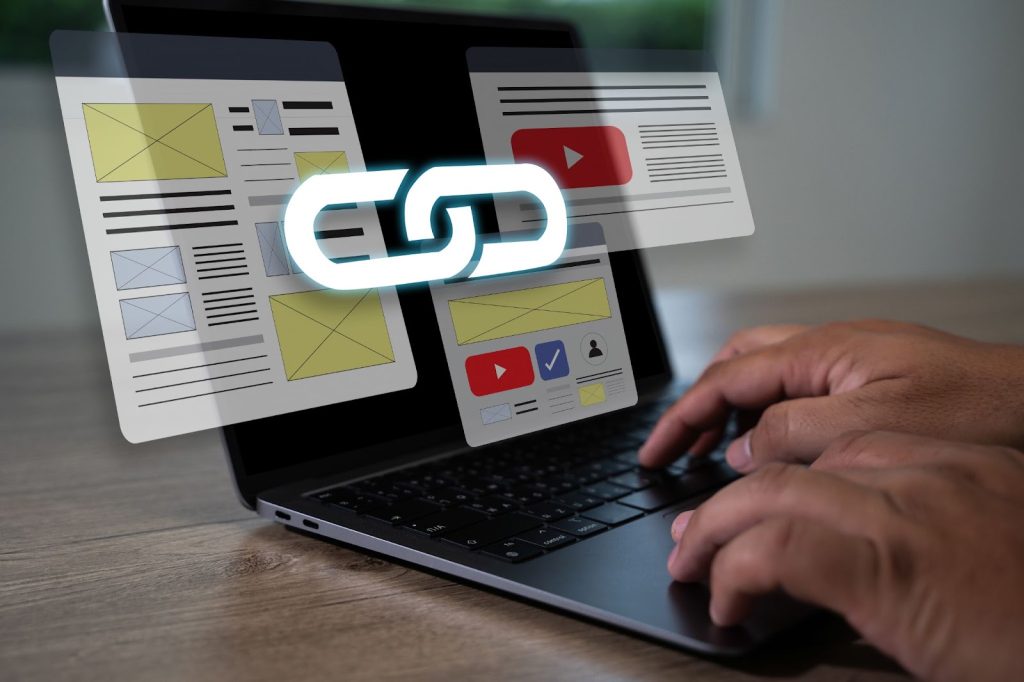
Image Source: Freepik
Confused by SEO advice? You’re not alone.
One expert says backlinks are the holy grail. Another claims they don’t matter anymore. A popular forum says guest posting is dead. Meanwhile, an agency is ranking sites by doing exactly that.
It’s hard to know what’s real and what’s outdated.
This article clears the fog.
We’ll break down the most common link building myths, explain what’s actually true in 2025, and share practical advice to build links the right way.
Let’s start with the basics.
Why Link Building Matters
What is link building?
Link building is the SEO process of getting other websites to link to yours. These links—called backlinks—serve as digital endorsements of confidence.
When a reputable website links back to you, it delivers a strong signal to search engines, suggesting that your content is trustworthy and valuable.
Why are backlinks important?
- They assist search engines in facilitating faster discovery of your pages
- They pass authority from one site to another
- They influence your rankings in search results
Google has said for years that backlinks are one of the top three ranking factors. No serious SEO strategy can ignore them.
But not all backlinks are created equal, and that’s where the myths begin.
Top Link Building Myths (and the Truths)
Myth 1: “More links = higher rankings.”
The truth is: Quality still prevails over quantity.
Many people believe that accumulating as many backlinks as possible guarantees higher rankings.
A recent study found that 96% of websites ranking in Google’s top 10 positions have 1,000 or more backlinks, and only 0.3% have fewer than 100 links.
However, a closer examination of the data reveals a more complex picture. The impact of backlinks on ranking appears to matter up to 100,000 links, but after this point, the correlation between link count and rankings actually declines.
We’ve seen websites with 160,000 backlinks from 12,600 domains that receive only 20 organic visits per month, proving that quantity alone doesn’t guarantee success.
Instead, focus on earning links from websites that are:
- Topically relevant to your niche
- Trusted by users and search engines
- Free from spammy link patterns
Myth 2: “All backlinks are the same.”
The truth is: Backlinks vary, and factors such as relevance, authority, and link placement critically influence their SEO value.
According to industry surveys, 84.6% of experts name relevance as a priority link building metric when evaluating backlink quality. However, this doesn’t mean that only links from websites in your exact niche provide value.
Links from high-authority media outlets, such as major newspapers, can boost your visibility and credibility, even if they’re not industry-specific.
The anchor text used and the surrounding context play a significant part in determining its SEO value. A website’s rankings for major keywords can suffer when receiving backlinks from high-authority sites if the anchor texts don’t match the website’s subject matter.
Industry leaders like The Blueprints specialize in securing relevant, authoritative backlinks, ensuring your link profile aligns with the latest SEO best practices.
Myth 3: “Paid links always get you penalized.”
The truth is: It depends on the link quality and its transparency.
Google discourages paid links that manipulate rankings. But NOT all paid links are bad.
If you’re transparent, choose quality sources, and evade spammy link farms, paid placements can be effective, especially in PR-style campaigns.
What to avoid:
- Fiverr gigs promising hundreds of links
- Networks of low-quality sites with no real audience
- Links with exact-match anchor text bought in bulk
The key distinction lies in how the links are acquired and whether they provide genuine value to users.
Myth 4: “Guest posting is dead.”

Image Source: Freepik
The truth is: Guest posting still works—if you do it properly.
Google only penalizes guest posting when it’s abused. If you’re mass-producing thin content and stuffing it with links, it won’t help.
But high-quality guest contributions to respected publications? It remains one of the most effective white-hat methods available.
Case in point: Respona’s link building case study demonstrates how guest posts contributed to earning links from reputable sites such as HubSpot and the Content Marketing Institute.
Myth 5: “You can rank without backlinks.”
The truth is: Rarely, except in very low-competition niches.
Yes, there are pages that rank with zero backlinks—but usually for long-tail keywords with little competition.
However, as competition intensifies, backlinks become increasingly crucial. They help Google determine which pages are most trusted in a sea of similar content.
Editorial.Link’s guide confirms that content alone is rarely enough in competitive spaces.
Myth 6: “Link building is black hat SEO.”
The truth is: Ethical link building aligns with Google’s guidelines and enhances authority.
This misconception stems from the association of link building with manipulative practices from the past.
Black hat link building includes tactics like:
- Buying links in bulk from spammy sites
- Private blog networks (PBNs)
- Link cloaking or hidden redirects
These can get you penalized.
But white hat link building? It’s based on adding value, building relationships, and earning links naturally. Google encourages this.
Another case study, the J.C. Penney incident, illustrates how black-hat links can lead to substantial penalties, even for major brands.
Myth 7: “Link exchanges don’t work anymore.”
The truth is: Excessive or manipulative link exchanges are risky, but relevant, genuine exchanges can still provide value.
If you’re exchanging links with dozens of unrelated websites, that’s a problem.
However, authentic, relevant partnerships—such as two niche sites linking to each other’s best content—are still acceptable.
Keep it:
- Topical
- Occasional
- Transparent
The key is ensuring that any link exchange provides real value to users and occurs naturally within the context of a business relationship or content collaboration.
Myth 8: “You only need links from high-authority sites.”
The truth is: A diverse link profile that includes mid-tier sites, niche blogs, and local sites helps build trust naturally.
While high Domain Authority (DA) or Domain Rating (DR) backlinks can help, it’s only part of the entire picture.
Links from top-tier sites are great—but they’re not the only ones that matter. Mid-tier blogs, community sites, and local publications all contribute to a healthy link profile.
A natural backlink profile includes:
- High-authority media
- Niche-specific blogs
- Business directories
- Local sources
Diversity helps reduce risk and builds trust.
Myth 9: “Anchor text doesn’t matter.”
The truth is: Anchor text distribution affects rankings and needs to be diversified naturally.
Google prefers anchor text that sounds natural and fits smoothly in the content.
Over-optimized anchor text (like repeating your target keyword) can trigger spam signals. On the flip side, completely generic anchors like “click here” miss SEO opportunities.
Anchor text best practices: Mix it up.
- Branded anchors (e.g., “Grit Zone Fitness”)
- Natural phrases (e.g., “this guide to fitness goals”)
- Partial match keywords
- Generic anchors
Aim for variety and avoid patterns.
Myth 10: “You can just buy a bunch of links to succeed quickly.”
The truth is: Shortcut tactics usually backfire—building links takes time and effort for lasting results.
It’s tempting to “scale” link building with cheap services. However, most of them employ shady tactics that eventually get discovered.
Buying backlinks from low-quality sites may provide a short-term boost to your site, but they’re unlikely to yield lasting results. Search engines have become increasingly meticulous and sophisticated at identifying and devaluing manipulative link schemes.
Sustainable link building takes:
- Real relationships
- Strategic outreach
- Valuable content
- Consistent and continuous effort
- Patience
As always, if it sounds too good to be true, it probably is.
The Truth About Link Building Today
So, what actually works in 2025?
Here’s what the successful SEO teams focus on:
| Factor | Why It Matters |
| Relevance | Google favors links from related content and niches |
| Diversity | A varied link profile looks natural and reduces risk |
| Authority | Trust signals from respected domains carry more weight |
| Context | Placement in meaningful, useful content helps rankings |
| Content Quality | Great content earns better links and responses |
Also important: Ethical SEO Link Building Practices.
White hat SEO focuses on quality, transparency, and audience value. Black hat shortcuts might offer quick wins, but they rarely last.
Content marketing and digital PR now play a major role in link acquisition. The best links are earned, not begged for.
Practical Tips to Build Quality Links
We’ve busted the myths. Now, here’s what to actually do:
Tip #1: Create Valuable, Linkable Content
Focus your efforts on creating genuinely valuable content that addresses real problems in your industry. Data-driven content and industry insights often attract backlinks naturally as journalists and content creators constantly seek authoritative sources to reference.
Content that earns links usually fits one of these categories:
- Unique data or case studies
- How-to guides and tutorials
- Industry roundups or expert quotes
- Tools or calculators
Focus on being useful, not just ranking for keywords.
Tip #2: Use Smart Outreach
Develop systematic outreach processes that prioritize building relationships over simply requesting links. Research your target websites thoroughly, understand their content needs, and propose collaborations that provide mutual value.
A good outreach is:
- Personalized
- Relevant
- Brief
- Valuable to the recipient
Avoid mass emails and template blasts. Build real relationships.
Tip #3: Build Real Relationships
Some of the best links come from connections.
Effective ways to build them:
- Comment on industry blogs
- Engage on LinkedIn or Twitter
- Contribute to niche communities
- Attend events or virtual meetups
Over time, these relationships naturally develop into link opportunities.
Tip #4: Take Advantage of Internal Linking
Internal linking is often an overlooked SEO tactic, but can still be one of the quickest ways to boost your SERP visibility, especially for mid- and long-tail keyword phrases.
Utilize internal links to distribute authority throughout your website and help search engines better understand your content structure.
Tip #5: Link Quality Monitoring
Monitor your link profile regularly using tools like Ahrefs or SEMrush to identify lost or broken links.
Link reclamation helps you recover valuable links that may have been removed during website updates or content changes.
Tip #6: Diversify your Link Building Strategy
Consider diversifying your link building SEO strategies rather than relying on a single approach.
A comprehensive link building strategy that incorporates guest posts, resource links, outreach, and content marketing is more effective than relying on a single tactic. This diversification helps mitigate risks and maximizes opportunities for ranking improvements.
Tip #7: Target Editorial Placements

Image Source: Freepik
Editorial links—those added by writers or editors because your content is helpful—are some of the most valuable.
Earn them by:
- Offering expert quotes
- Sharing original research
- Pitching relevant stories to journalists
Use platforms like:
Wrapping Up
SEO isn’t about chasing loopholes anymore. It’s about building real trust—with users and with search engines.
We’ve debunked 10 common link building myths that confuse marketers and lead to wasted effort.
The truth? Link building still works—when it’s done RIGHT.
- Focus on relevance and quality
- Build real relationships
- Avoid shady shortcuts
- Diversify your link sources
Need help with your backlink strategy?
Contact us for a link building audit or a free consultation. We’ll help you separate myth from method—and build a stronger foundation for SEO.
